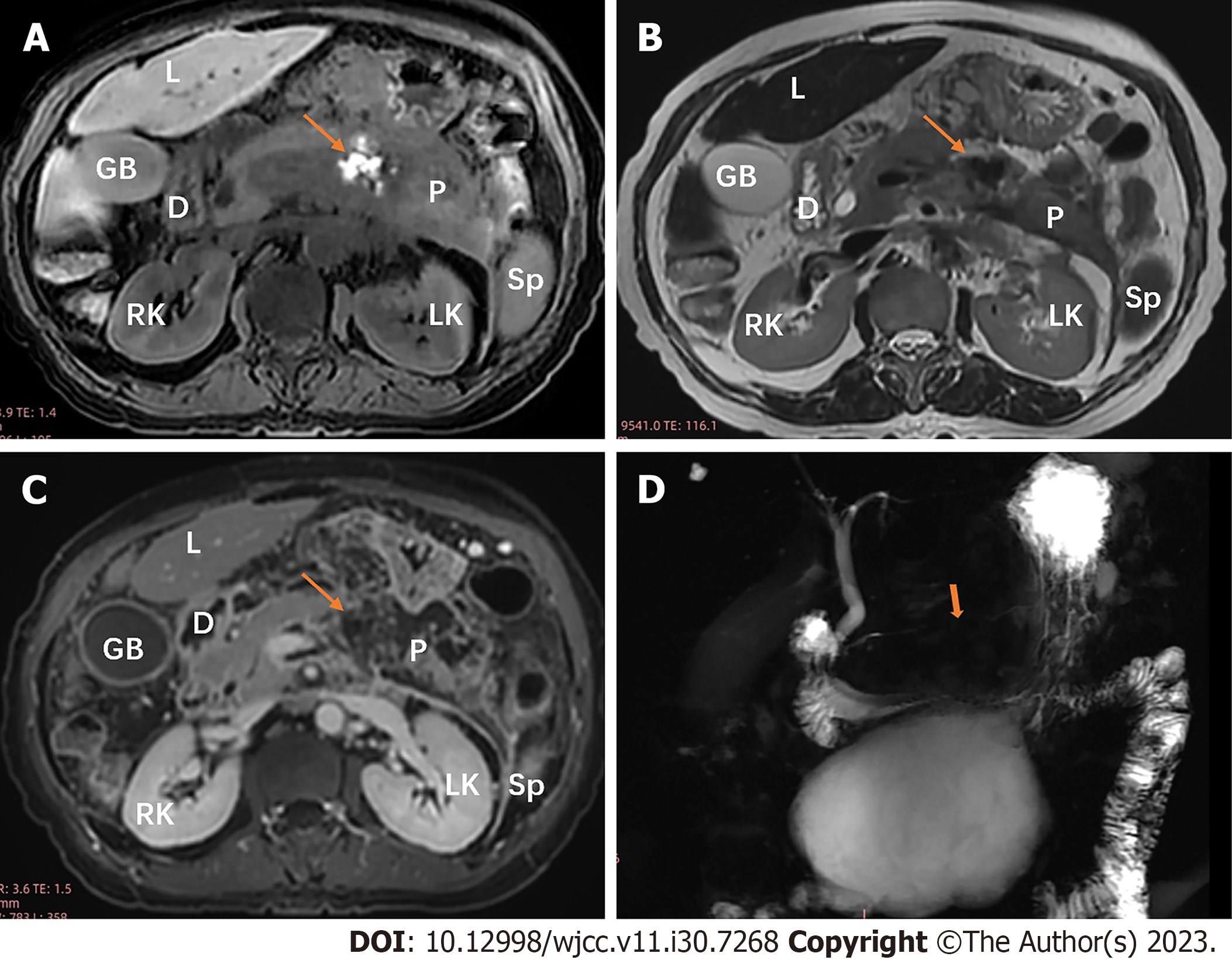Copyright
©The Author(s) 2023.
World J Clin Cases. Oct 26, 2023; 11(30): 7268-7276
Published online Oct 26, 2023. doi: 10.12998/wjcc.v11.i30.7268
Published online Oct 26, 2023. doi: 10.12998/wjcc.v11.i30.7268
Figure 5 A 67-year-old woman with type 2 diabetes mellitus with moderately severe acute pancreatitis whose fasting blood glucose level was 7.
3 mmol/L. A: Axial T1-weighted image shows local hyperintensity (arrow) in the body of the pancreas; B: Axial T2-weighted image shows local hypointensity (arrow) in the body of the pancreas, indicating pancreatic hemorrhage; C: Postcontrast venous phase axial magnetic resonance (MR) image shows nonenhanced area (arrow) compatible with parenchyma necrosis (< 30% parenchyma involvement) in the body of the pancreas (MR severity index score of 6 points); D: Magnetic resonance cholangiopancreatography shows “disconnected pancreatic duct syndrome” in the body of pancreas. D: Duodenum; GB: Gall bladder; L: Liver; LK: Left kidney; P: Pancreas; RK: Right kidney; Sp: Spleen.
- Citation: Ni YH, Song LJ, Xiao B. Magnetic resonance imaging for acute pancreatitis in type 2 diabetes patients. World J Clin Cases 2023; 11(30): 7268-7276
- URL: https://www.wjgnet.com/2307-8960/full/v11/i30/7268.htm
- DOI: https://dx.doi.org/10.12998/wjcc.v11.i30.7268









